Recently I made a presentation to the Birmingham tech community entitled “how to hack your office space to foster productivity and innovation.” The subtitle could/should have been “on a budget.” To illustrate this point, I shared my experience touring Zappos in its early Vegas days – before Amazon bought the company and it moved to funkier and more urban space on the Strip.
The Zappos Tour
About ten years ago, Zappos leased space in a non-descript (read: ugly) suburban midrise building on the outskirts of Las Vegas. From the parking lot, the building looked corporate in every negative sense of the word, however, once you walked in the front door, the space was edgy and funky. The floor plan was completely open plan and the C Suite was actually just a row of mismatched cubicles affectionately referred to as “monkey row” with numerous stuffed animals hanging from the ceiling and all kinds of whimsical décor around it.
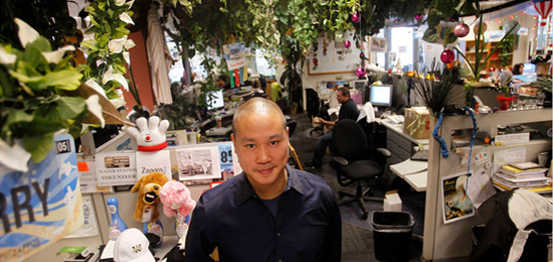
Tony Hsieh in Monkey Row
Zappos’ culture was (and still is) zany and funky – a place where everyone is welcome. Maybe because this space was so wacky, none of the quirky personalities working there really seemed out of place. And that worked for Zappos. Even on a budget. They were always able to find employees who were loyal and bought into the customer service mission of the company even when the pay was on the low side of market. This was a big part of their culture, fueled the stickiness to the company and was a source of energy for all.
On to Birmingham and Kinetic
Last week, I was able to spend some time with Jay Brandrup, the founder of Kinetic, a digital services agency and developer, to learn a little about how, like Zappos, Birmingham-based Kinetic built a culture — and eventually a space conducive to that culture — without going broke.
Started over twenty-two years ago, Kinetic’s founder rented inexpensive office space for the initial sixteen years of its business. This allowed Kinetic’s owners to focus on investing in their business while also saving money to buy a long-term home. Five years ago, they bought an old building down the street from their old offices on Birmingham’s cobblestoned Morris Avenue. The purchase price was extremely low, reflective of the significant amount of work the building needed, and while Kinetic made a sizable investment in restoring the building, they didn’t spend “Microsoft” sized money on it.
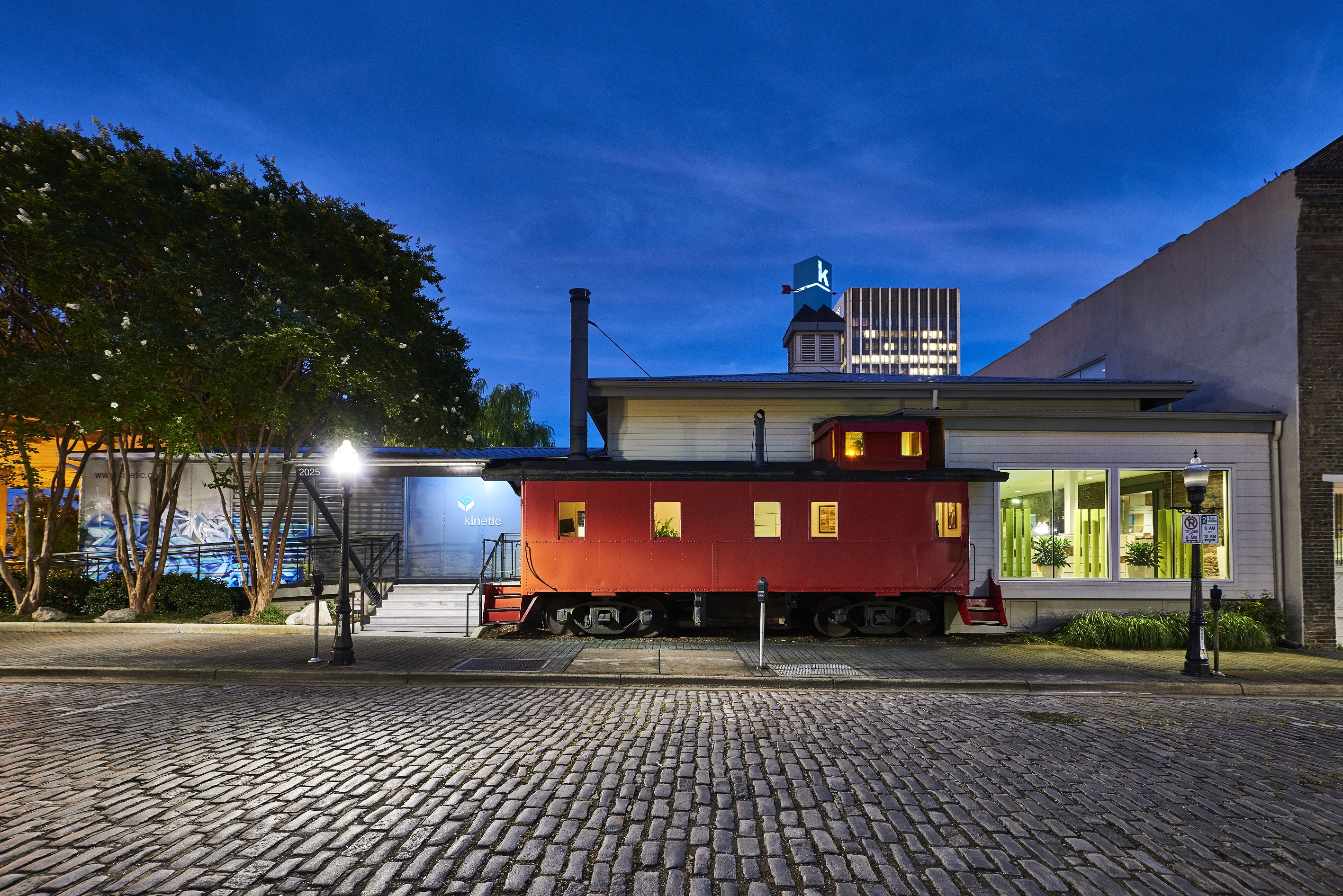 Because Kinetic’s business depends on the imagination and ingenuity of its people, Kinetic’s culture is all about sparking creativity and out of the box thinking. They accomplish this by focusing on technology, history and play.
Because Kinetic’s business depends on the imagination and ingenuity of its people, Kinetic’s culture is all about sparking creativity and out of the box thinking. They accomplish this by focusing on technology, history and play.
Technology-centric Space
After visiting their space, I would describe their culture as technology focused, but not in the “we’re a Silicon Valley firm that is creating some new app so please refer to us as a technology company” way. Rather, Kinetic seems to be a company of people who are genuinely fascinated by new technologies.
For instance, other than the actual San Francisco Wired offices which I visited last year, I have never seen another library that included every published issue of Wired magazine. Kinetic’s fascination with Wired does not end with their library. The company once voted on their favorite Wired cover and then commissioned nine artists to design their own interpretations of one-ninth of that cover. The nine pieces of art now hang in Kinetic’s Board Room.
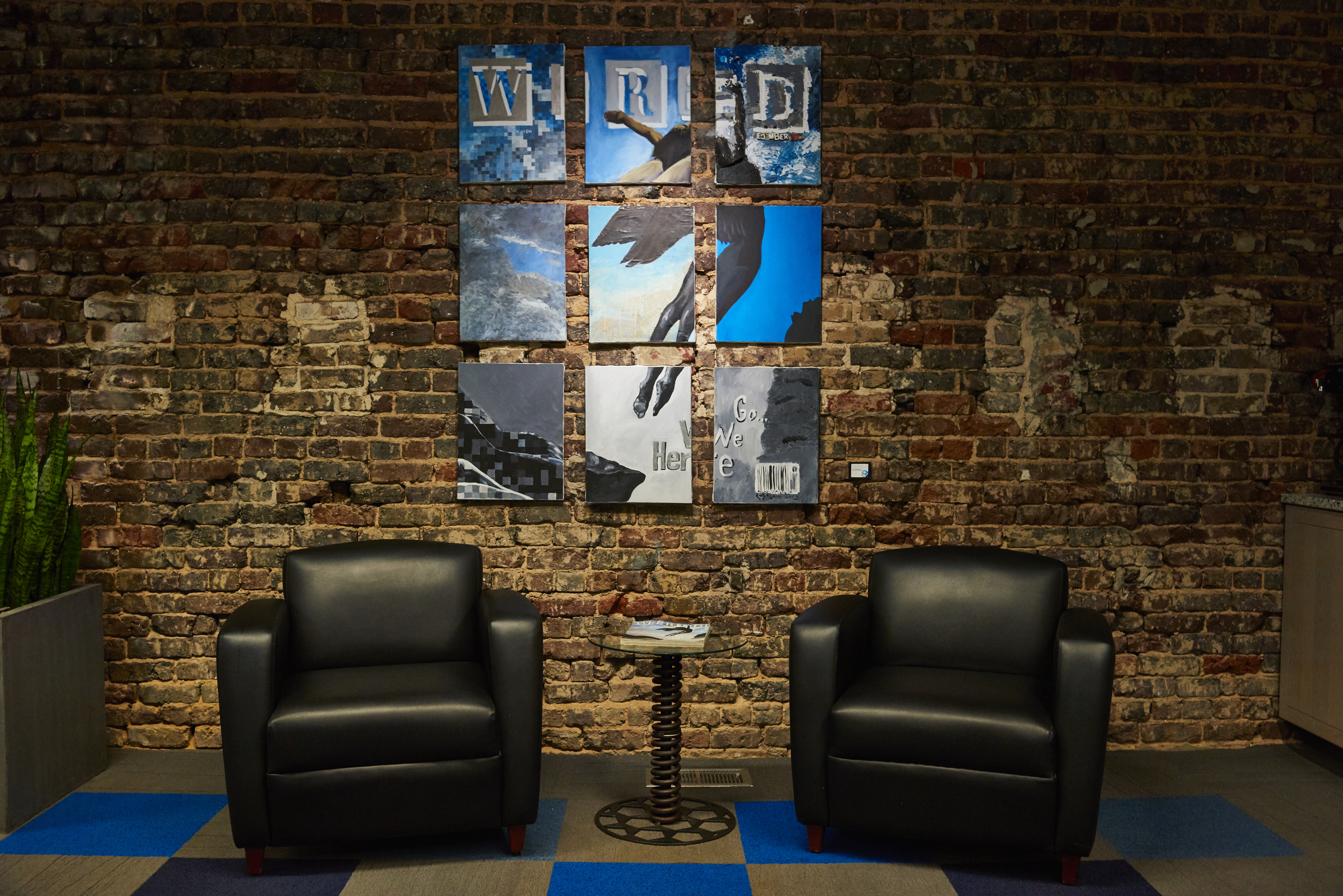
I Have an App for That
Another example of Kinetic’s technology fascination? Everything in the office can be run by an app. Pull a beer from the kegerator – your photo is going to be taken by a digital camera and can be pulled up from an app. (The company has found this to be an effective way of ensuring no underage drinking is occurring in their offices.) Change the lighting on the spaceship-like workspace in the center of the offices from an app. Check the security cameras. Shoot a basket in their game room and a mysterious computerized voice tells you the angle of your shot. When you spend a little time in an environment like this, it forces you to think about what other challenges could be addressed or processes improved with technology. Mission accomplished.
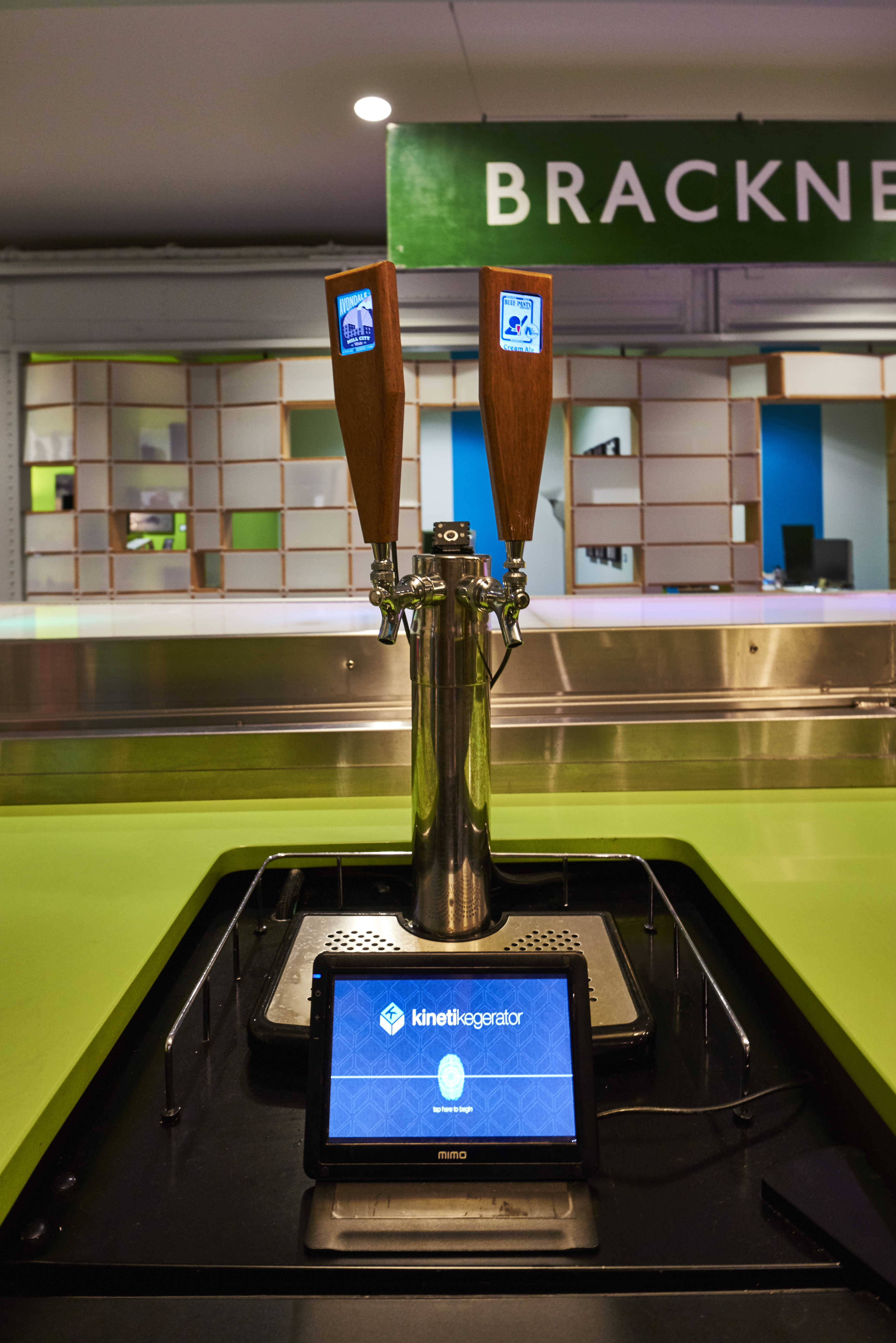
A Nod to the Past
Despite Kinetic’s love of futuristic technology, the company also carries a deep respect for its building’s history. Once a restaurant named Victoria Station (a nod to the English train station), two boxcars and a caboose complete with their undercarriages were built into the building. Kinetic obtained the original hostess stand from the restaurant and it sits in the reception area. The old Victoria Station sign hangs in the space and other various Victoria Station restaurant memorabilia (which Brandrup still actively and perhaps obsessively collects) can be found throughout the building.
Kinetic and its architect/contractor, Appleseed, also incorporated the railroad train history of the building in the renovation. The corrugated texture of its boxcars’ sides is reflected in paneled honeycomb-like walls throughout the space.
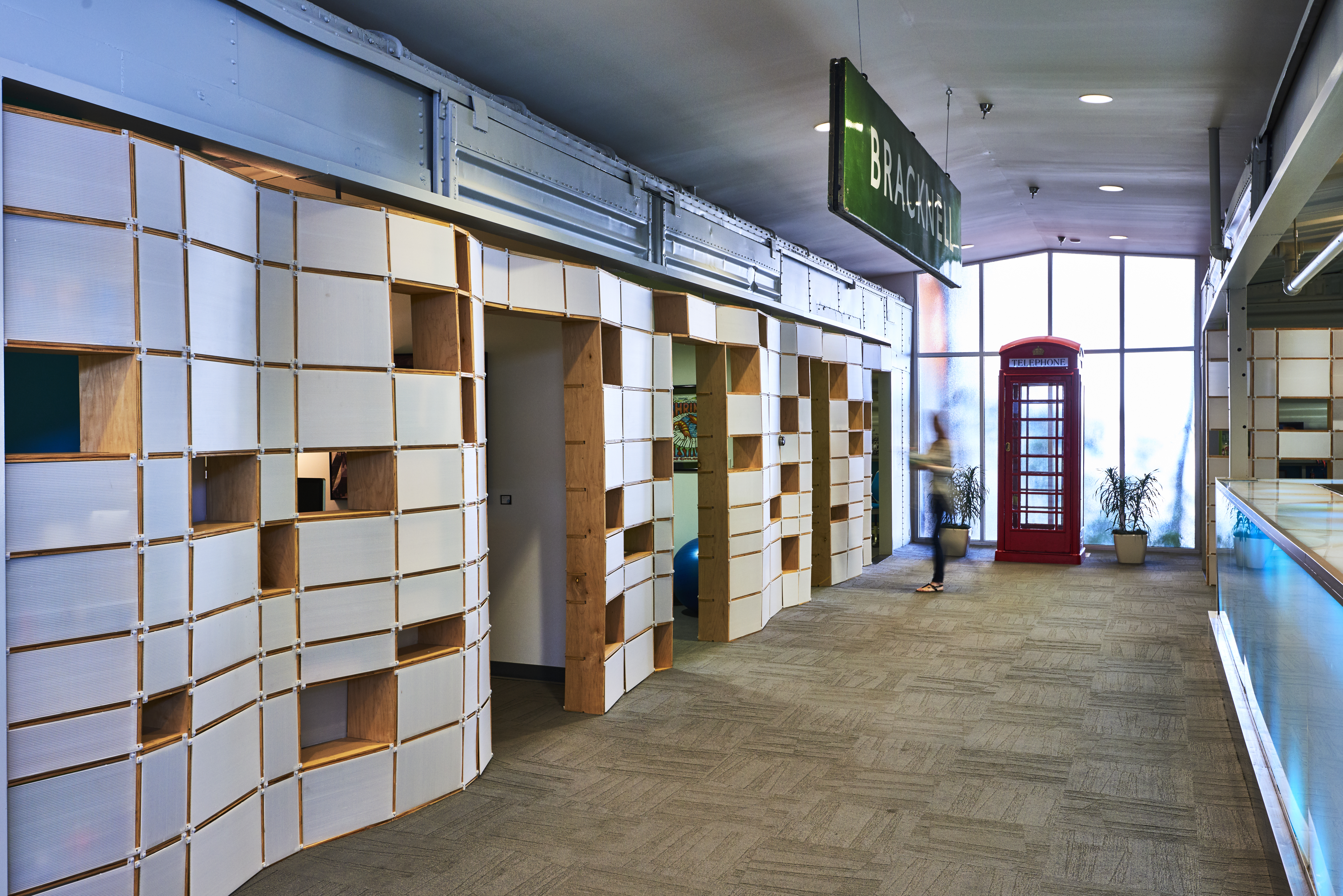 The board room table is actually a slab of glass mounted on two train wheels Appleseed found.
The board room table is actually a slab of glass mounted on two train wheels Appleseed found.
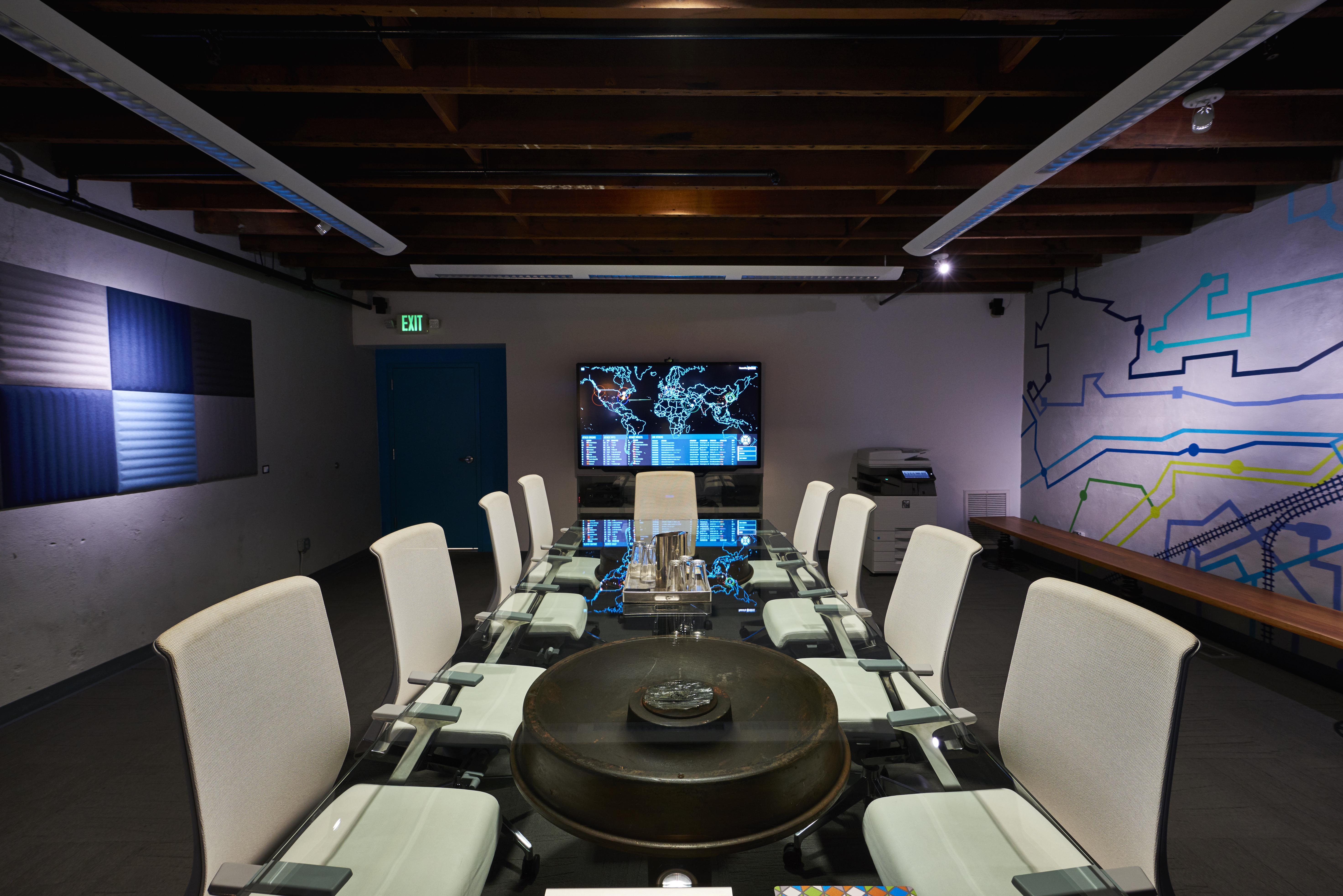 The wall bench in that board room sits on train springs Appleseed also salvaged.
The wall bench in that board room sits on train springs Appleseed also salvaged.
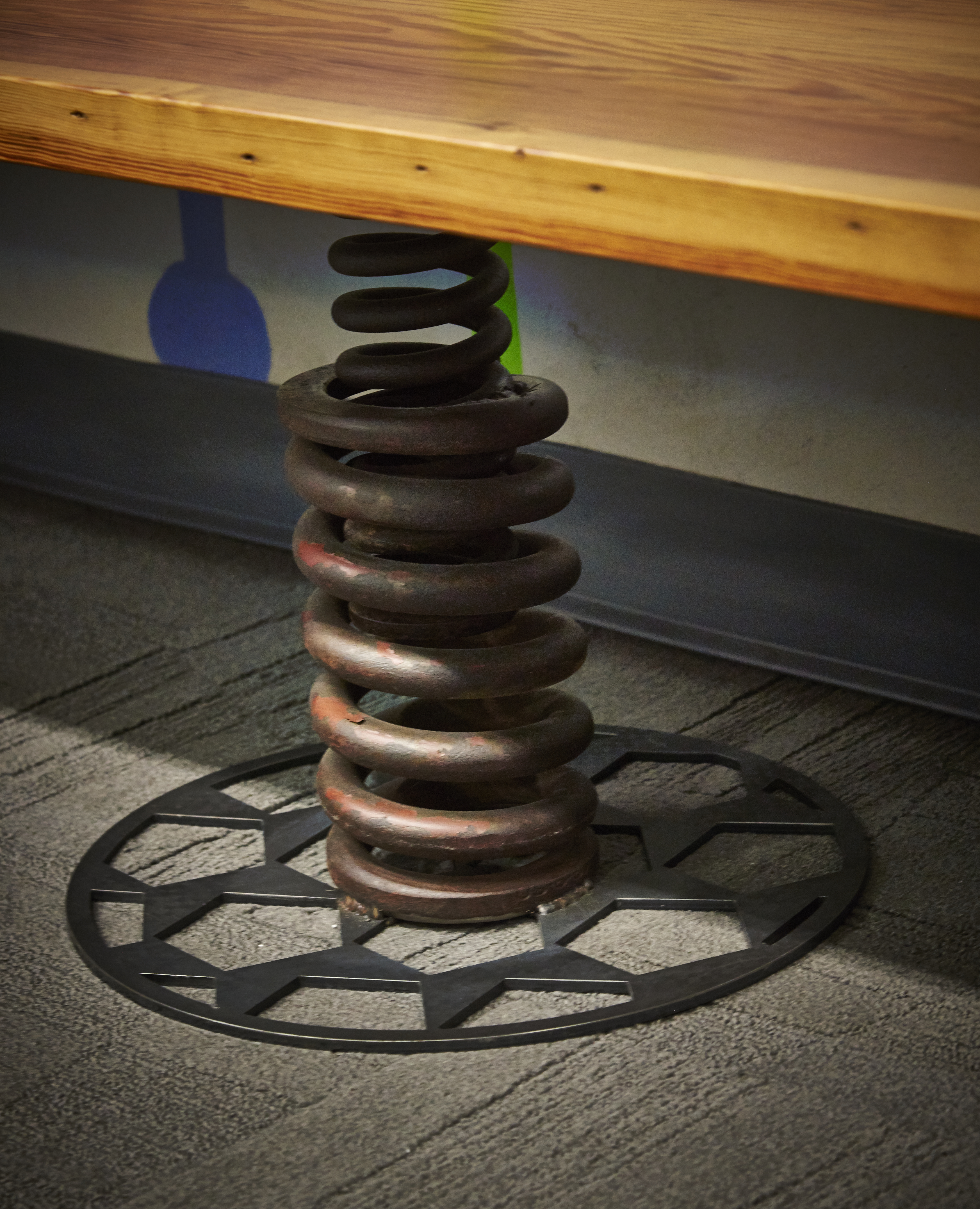
Play Time
The third piece of Kinetic’s culture is play. To that end, antique and classic toys can be found in nooks and crannies throughout the space and employees are not only allowed but encouraged to play with them. In addition, on the second floor, there is a full game room with video games, the aforementioned basketball hoop, musical instruments and a pool table.
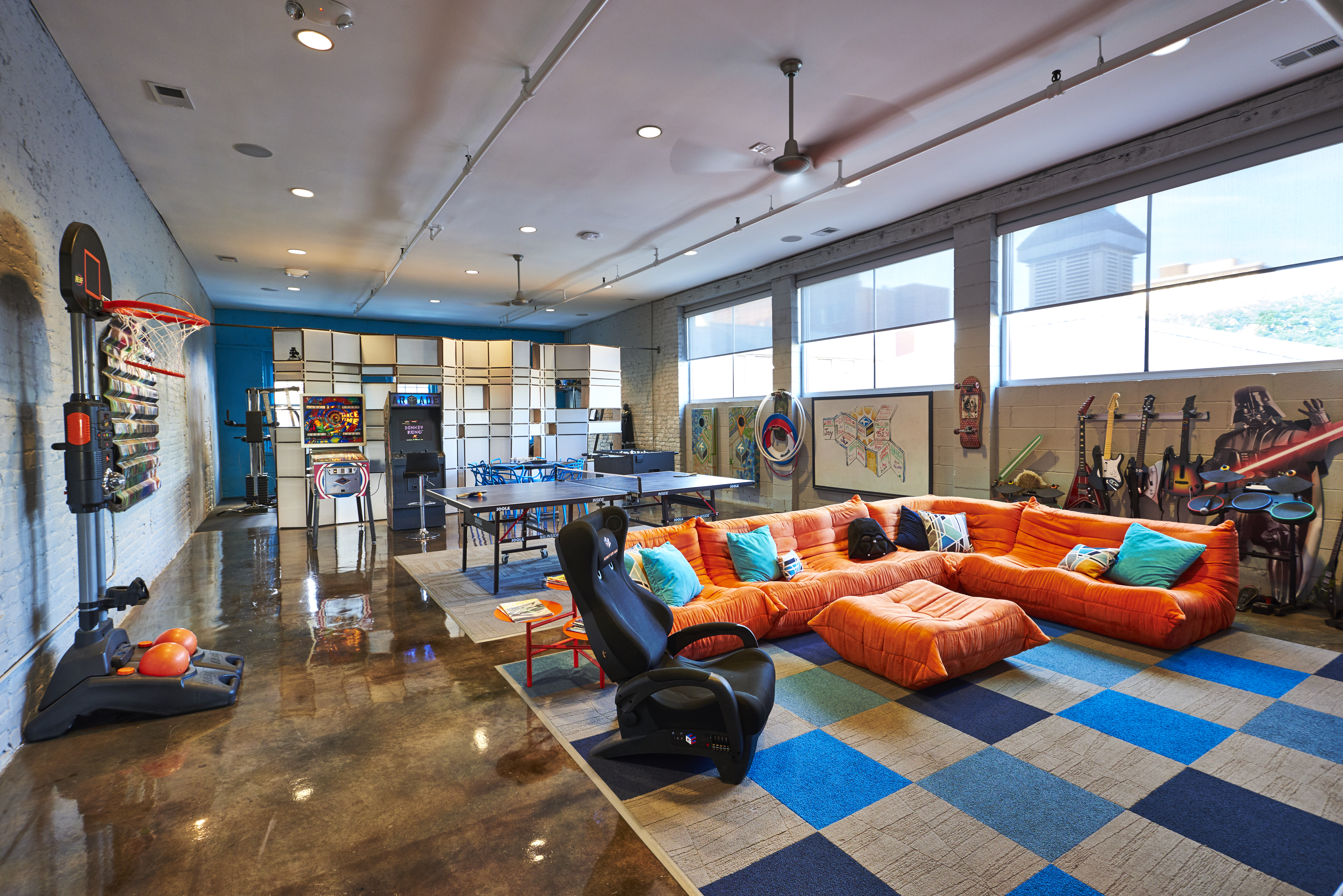 Out on the rooftop patio, there is a giant chess set and a rooftop driving range. The building also has a large outdoor barbecue area which sees significant use.
Out on the rooftop patio, there is a giant chess set and a rooftop driving range. The building also has a large outdoor barbecue area which sees significant use.
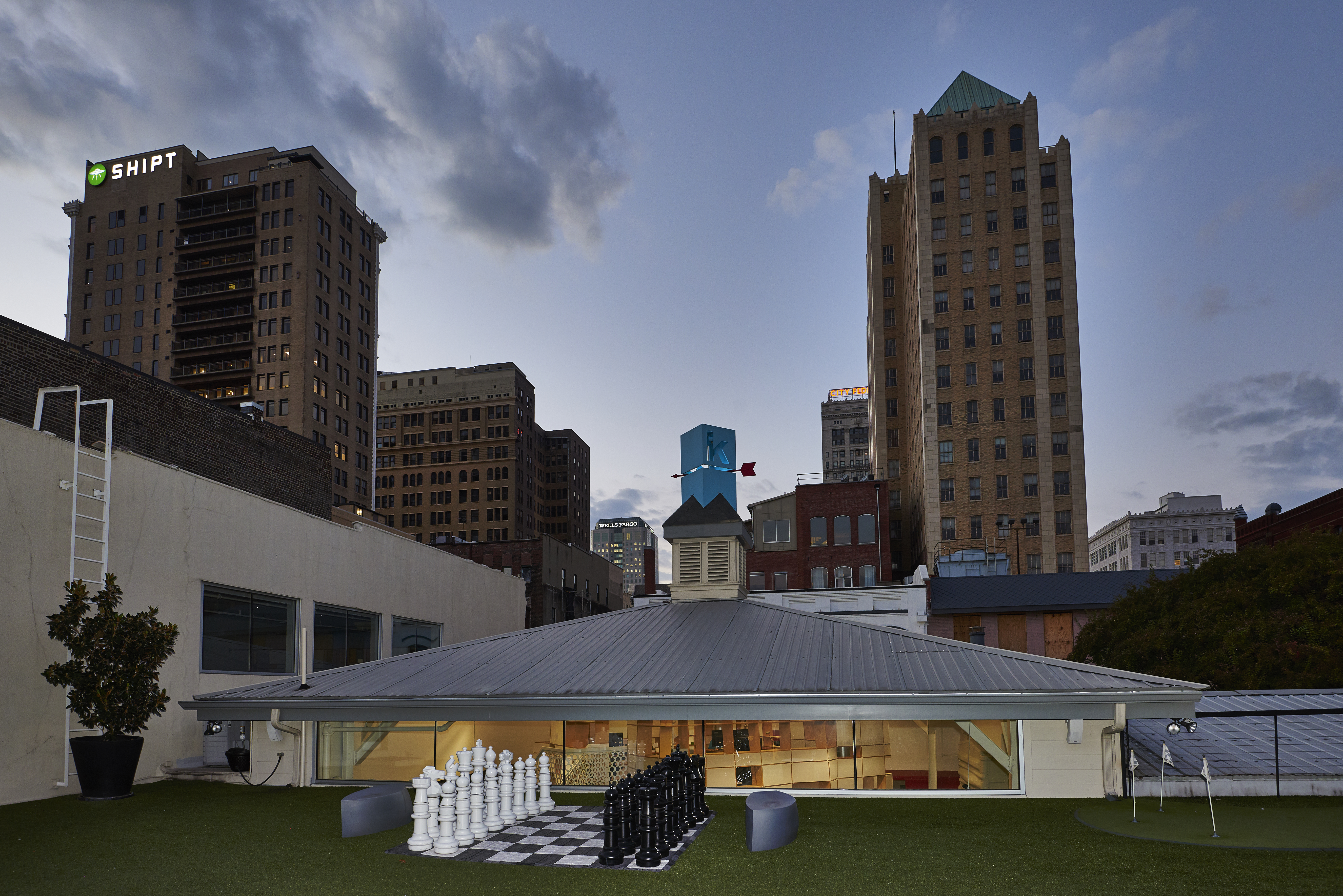 While building to encourage Kinetic’s technology, history, and play-focused culture was not without cost, Kinetic did not borrow money to build their space. To control costs and create a unique environment, they made creative use of “found” objects and trusted their Appleseed design build team’s judgment. The result is a quirky space that encourages creativity and out of the box thinking.
While building to encourage Kinetic’s technology, history, and play-focused culture was not without cost, Kinetic did not borrow money to build their space. To control costs and create a unique environment, they made creative use of “found” objects and trusted their Appleseed design build team’s judgment. The result is a quirky space that encourages creativity and out of the box thinking.
As a post script, buying a building is not right for every small company. (More here.) It works for Brandrup and Kinetic because according to Brandrup, Kinetic is a “lifestyle business” without huge growth plans. Kinetic’s building currently houses 16+/- employees and could easily accommodate a few more, so it will meet Kinetic’s needs into the foreseeable future. And, Brandrup does not have plans to seek venture capital and become the next Zappos, so culture — rather than flexibility to grow and relocate — was the priority.

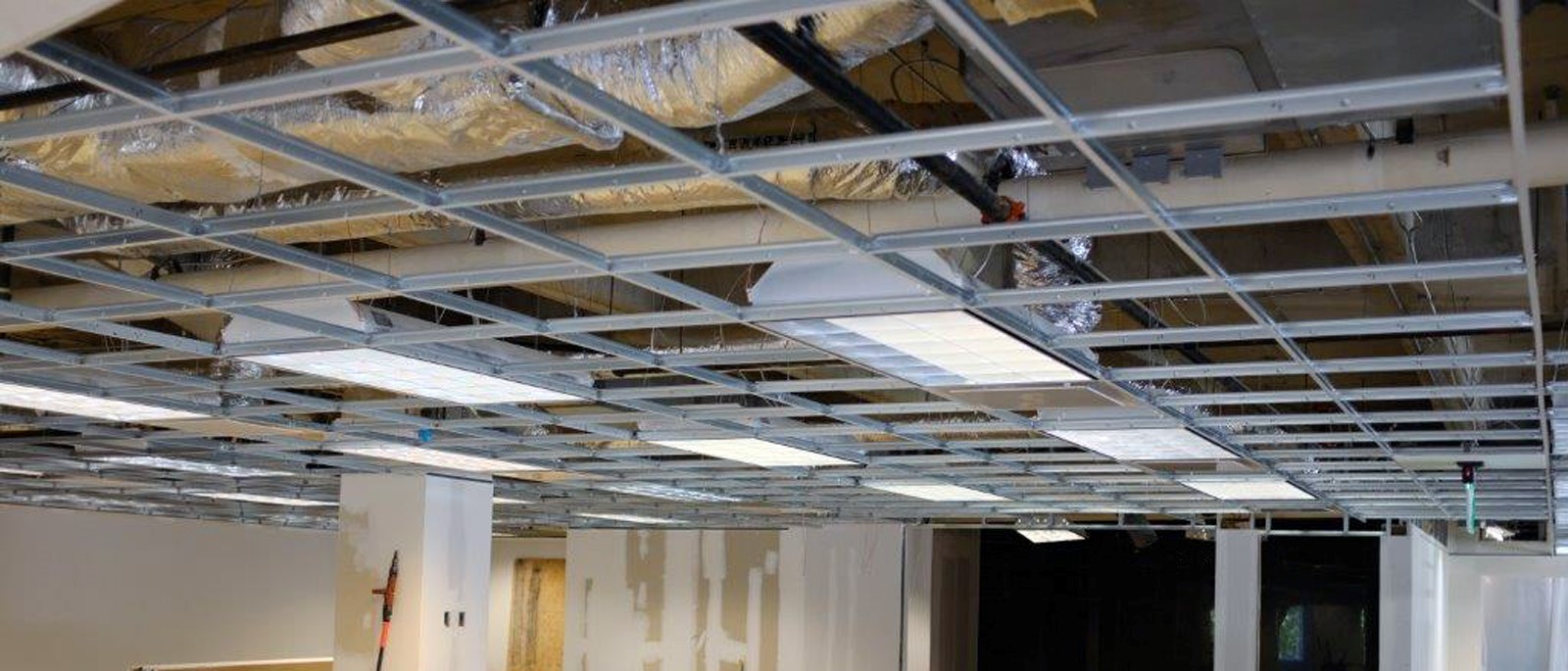
[…] in the urban core or a rundown former mall in suburbia and make it great. (Some great examples here and here and here.) Great space just has to reflect and promote a great company culture. And a […]